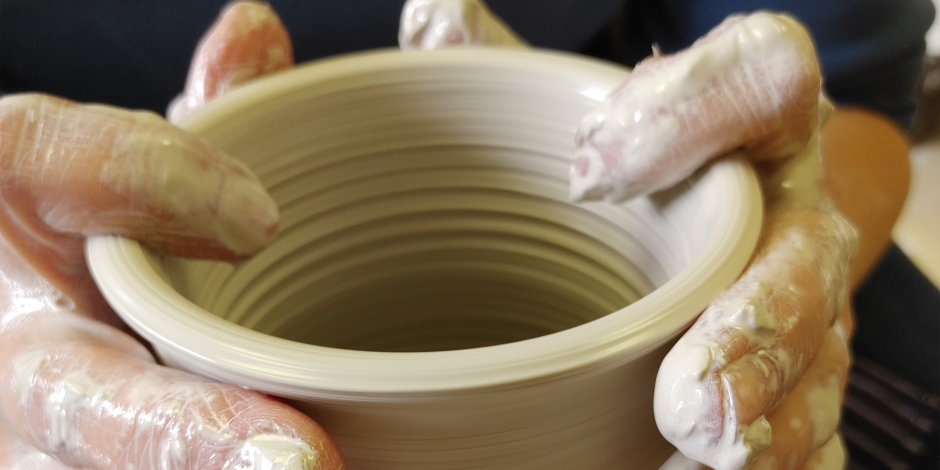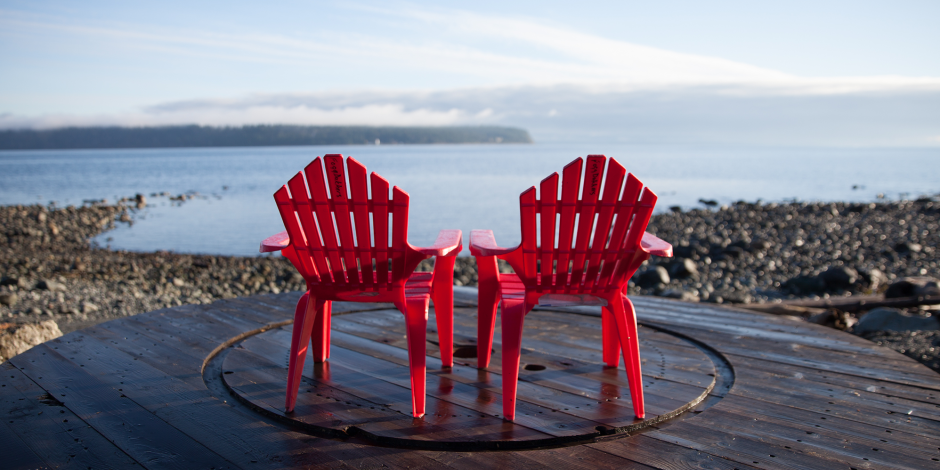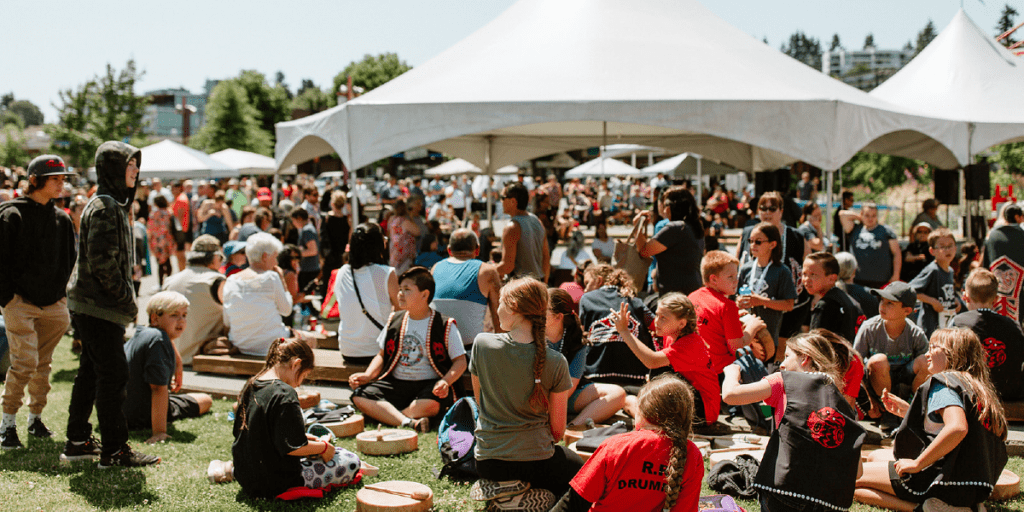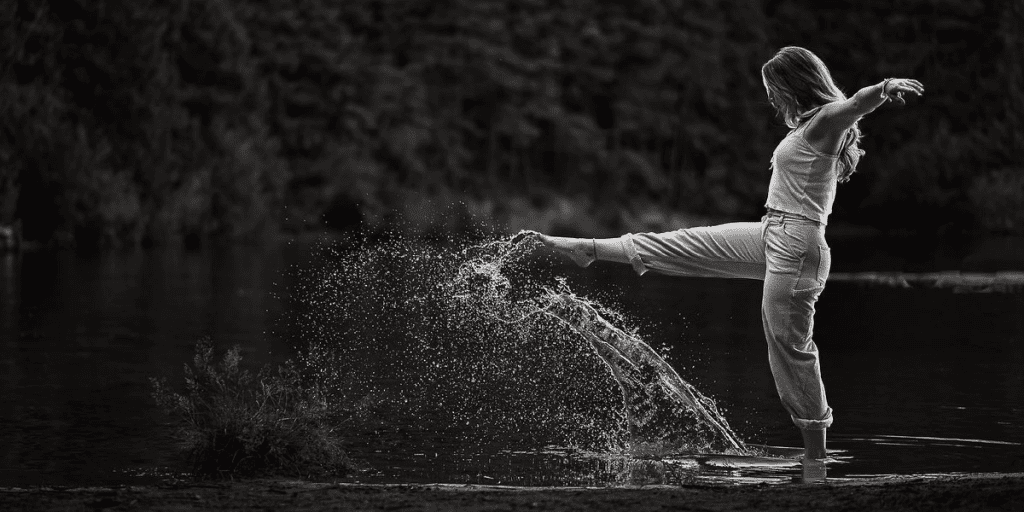Island Clayworks would like to acknowledge that we operate our business in the traditional territory of the Nuu-Chah-Nulth peoples, specifically the Mowachaht/Muchalaht First Nation.
In our gallery we meet many people whose number one question is, “Do you make a living selling your work?” The assumption is that a potter’s life is idyllic with nothing to do but play with clay. But how could that sustain the daily demands of life’s expenses? Well, playing with clay is only a piece of the puzzle that makes this lifestyle and career choice work.
When Neil and I met, over 30 years ago in art school, we talked about one day owning a studio and gallery, owning a home, and raising a family. At that time, it did seem idyllic. As with any goal, though, it needed to be closely minded.
Our first home had a space for a small studio with low ceilings in the basement, a wood stove, and a few uninvited guests. It wasn’t my favourite space to work. Often it was far too hot and not big enough to work on more than a kiln load at a time, but I managed. I was happy we had our home and our first child. While Neil worked full-time in the cable industry, I was fortunate enough to be a hobby potter, teach some classes, and be a stay-at-home mom.
Fast forward a few years: a move to Gold River, three more children, and full-time pottery became a reality. “A pottery” is an old English word for the business of a potter. I love this term and most people still refer to us as “the pottery shop.” Neil and I started working together full-time in a large, rented space that housed a ton (literally) of equipment with which we produced a wholesale line, as well as stock for our gallery. We were, as people say, living the dream. Our days were filled with hard manual work, long hours, tonnes of recycling clay, pressing, glazing, packing pots, and shipping our wholesale line across Western Canada. It was a busy time; the kids were young, and we were developing the business.
As fate would have it, another business opportunity presented itself: the possibility of owning a café and gallery in a new space, one that we were able to help design. It seemed like a great opportunity and offered something new for the community. We researched and planned our way into this next venture—owning and operating a café and gallery in a new space with our production studio right next door. We operated Clayworks Café for over 13 years until selling it just as the pandemic hit in 2020.
At that time, nothing seemed more idyllic than retreating into our studio and figuring out our next steps. We now run just “the pottery” as Island Clayworks in a smaller space within our gallery. We are filled with gratitude that this is how we get to make our living. Some days it does seem ideal, and yes, we do play with clay—that’s the business we are in. But it takes constant creativity and sometimes the creativity runs dry, and we must recharge.
For Neil to recharge he gets out in nature with his camera. Being inspired by nature reflects itself in the pottery. Neil’s documentation of wildlife, scenery, and specific points of interests shows up on the surfaces of his pots. Bird life, bears, orcas, salmon, lighthouses, and rocky outcroppings are all subject matter for him. He accomplishes this imagery using a process called sgraffito, which literally means scratching the clay. By applying a layer of black slip over the clay he carves away the negative space to create beautiful surface decoration.
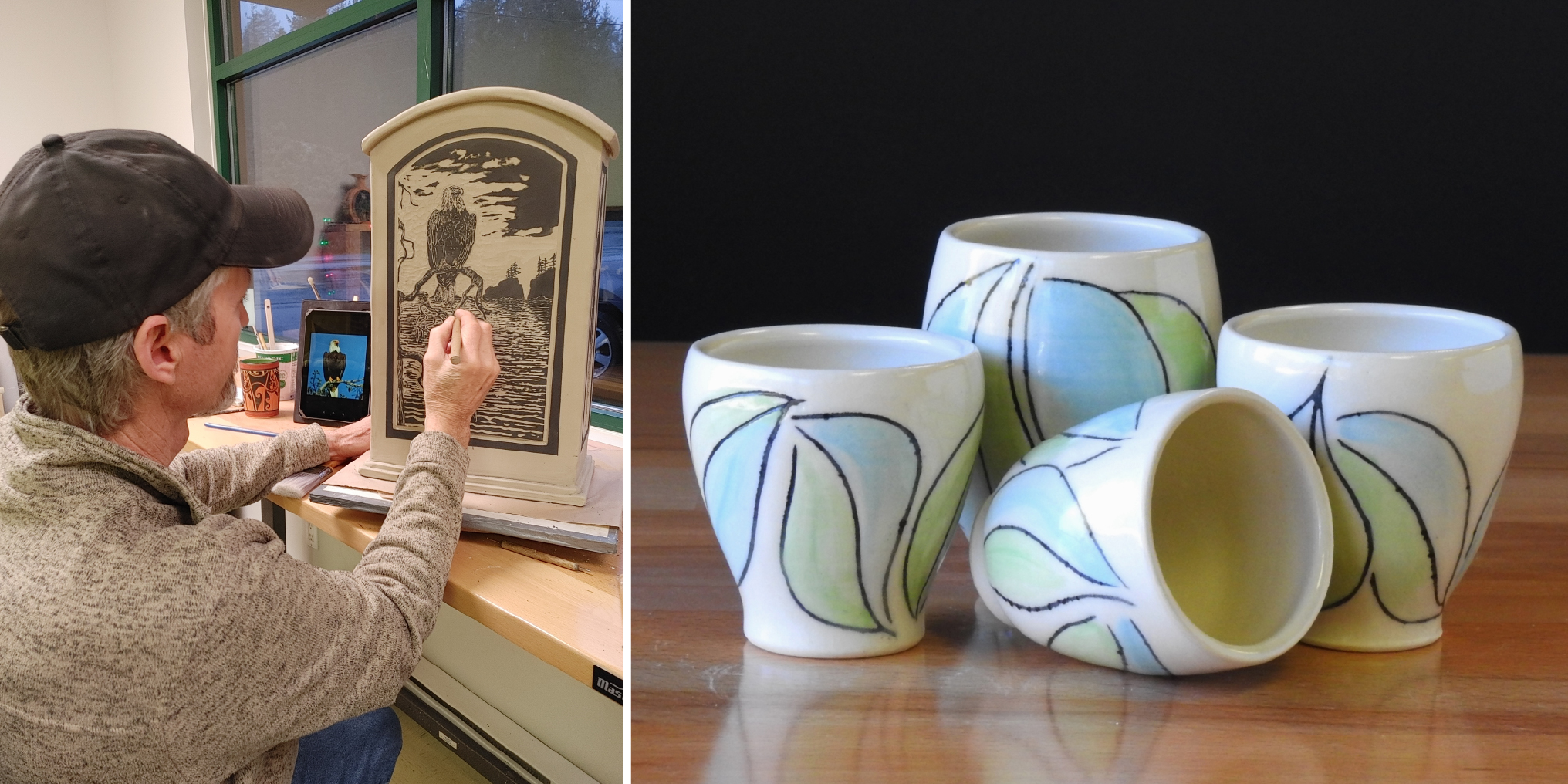
His work encapsulates the West Coast. He says, “I like to think that when someone takes home a piece of our pottery, they are bringing with them a shared experience of this beautiful island.” Indeed, many people from all over the world have his pots decorating their homes and in their hands enjoying a morning cup of coffee.
My work is more varied, and I recharge by taking walks in the forests and along the seashore. My work reflects these environments and includes surface decorations inspired by local flora and fauna or by texture found in the natural world. The resulting imagery could include such things as wood, seashells, water, mountain scenes, local plant life, and creatures such as butterflies.
The business of running a business is often a chore for artists. We are generally wired to create and could be quite happy letting someone else take care of the bookkeeping and sales. But developing my skills as an entrepreneur has informed my creativity. In our small operation, combining the skills of creativity and business is relatively simple since we make decisions together.
The pandemic caused a shift, or pivot, for many small businesses and ours was no exception. We launched our online store in 2020 and have been learning the skills to market online products, as well as keep our brick-and-mortar shop open. We are grateful to our community of Gold River for their support, and we are thankful for our online customers who have shown us that our pots can go across the globe and that’s just cool!
So, after 18 years of making pottery in Gold River, and navigating through a few distractions, we still love what we do. To take a solid block of clay and create a pot that someone treasures is a remarkable experience, and I am always inspired by the infinite possibilities.
Come to think of it, maybe we do live an idyllic life.
Anita has a BFA from Emily Carr University and enjoys writing on the arts in her spare time. For more information, visit islandclayworks.com.

